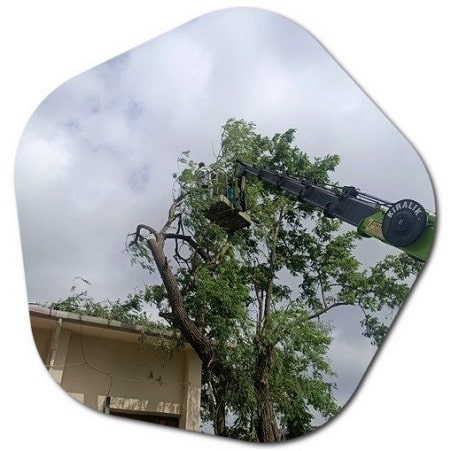Is a tree pruning permit required in Tumwater?
Tree pruning and felling requires permission from local public authorities. Accidental felling, especially of some historic trees, may expose you to legal liability. Therefore, it is important to obtain permission for tree pruning and tree felling, even on private property, and to provide information. However, it’s important to note that regulations and permit requirements can change over time, so it’s always a good idea to check with the local authorities or the City of Tumwater’s official website for the most up-to-date information.
While a permit may not be required for tree pruning, it’s essential to follow best practices and guidelines when pruning trees. This includes avoiding excessive pruning, making proper cuts to promote tree health, and being mindful of any restrictions related to protected or heritage trees in the area. It’s recommended to consult with a certified arborist or tree care professional for expert advice and to ensure that pruning is done safely and in accordance with industry standards.

To obtain accurate and current information regarding tree pruning permits in Tumwater, I suggest contacting the City of Tumwater’s Planning Department or the Department of Community Development. They will be able to provide you with the most up-to-date regulations and guidance on tree maintenance activities within the city.
Tree pruning in Tumwater
As of my knowledge cutoff in September 2021, Tumwater, Washington, does not require a permit specifically for routine tree pruning on private property. However, it’s important to note that regulations and requirements can change over time, so it’s always a good idea to check with the local authorities or the City of Tumwater’s official website for the most up-to-date information.
While a permit may not be necessary, it’s important to follow best practices and guidelines when pruning trees. Here are a few key points to keep in mind:
- Respect tree protection regulations: Tumwater may have regulations in place to protect certain types of trees, such as heritage trees or trees in designated areas. Familiarize yourself with any applicable regulations before pruning.
- Consider professional help: If you are unsure about pruning techniques or if the tree in question is large or requires specialized care, it’s advisable to consult a certified arborist or tree care professional. They can assess the tree’s health, recommend appropriate pruning methods, and ensure the work is done safely.
- Practice proper pruning techniques: When pruning trees, it’s important to use the correct tools, make clean cuts, and avoid removing excessive foliage. Improper pruning practices can harm the tree and potentially lead to long-term damage.
- Be mindful of timing: While routine pruning can be done at any time of the year, it’s generally recommended to avoid pruning during the tree’s active growth periods, such as spring and early summer. Pruning in late winter or early spring when the tree is dormant is often preferred.
Remember, it’s always a good idea to check with the local authorities or consult with a professional arborist for the most accurate and up-to-date information regarding tree pruning regulations and best practices in Tumwater.
Which trees are pruned in Tumwater?
In Tumwater, a variety of trees may be pruned for different reasons. The specific trees that are pruned can depend on factors such as their location, health, size, and the purpose of the pruning. Here are some common types of trees that may be pruned in Tumwater:
- Deciduous Trees: Deciduous trees, such as maple, oak, birch, and cherry trees, may require pruning to remove dead, damaged, or diseased branches, improve their overall shape, or manage their size.
- Evergreen Trees: Evergreen trees like pine, spruce, fir, and cedar can benefit from pruning to remove dead or diseased branches, maintain their shape, or improve their structure.
- Fruit Trees: Fruit trees, including apple, pear, and plum trees, often require pruning for fruit production, disease management, and to ensure proper branch structure and light penetration.
- Ornamental Trees: Various ornamental trees, such as dogwood, magnolia, flowering cherry, and redbud trees, may be pruned to enhance their aesthetic appeal, promote flowering, or manage their size and shape.
- Street Trees: Trees planted along streets and in urban areas may be pruned to maintain clearances from buildings, power lines, and sidewalks, ensure visibility, and prevent potential hazards.
- Shade Trees: Large shade trees like oak, maple, and sycamore trees may require pruning to remove deadwood, improve their structure, or manage their size for safety and aesthetics.
Tree pruning in Tumwater – Tree removal in Tumwater; It’s important to note that the specific pruning requirements for each tree species may vary. Pruning practices should follow industry standards, be carried out with the tree’s health in mind, and comply with any applicable local regulations. If you have specific trees on your property that require pruning, it’s advisable to consult with a certified arborist or tree care professional who can assess your trees and provide expert guidance on the appropriate pruning techniques.
Cost of tree pruning and removal in Tumwater
- Tree Pruning: The cost of pruning a tree can range from approximately $200 to $1,000 or more. Smaller trees or routine pruning of smaller branches tend to be on the lower end of the price range, while larger trees or extensive pruning needs can be more expensive.
- Tree Removal: The cost of tree removal can vary significantly based on the size, complexity, and location of the tree. For smaller trees, you can expect to pay anywhere from around $300 to $800 or more. Larger trees, especially those located close to structures or in challenging environments, can cost several thousand dollars for removal.





